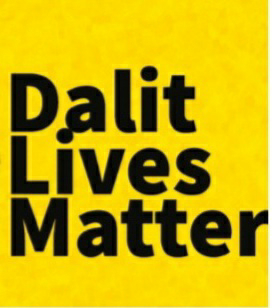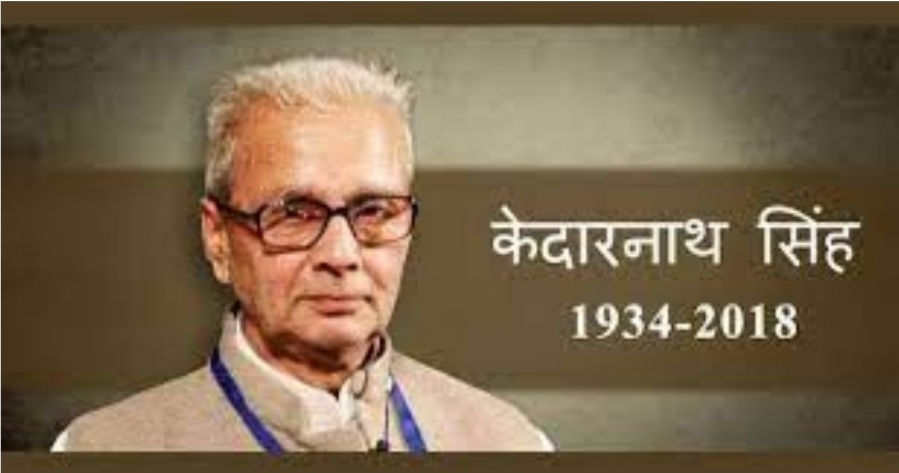SHOULD DALITS REMAIN VICTIMS FOREVER?
Why is Dalit Literature abound with victimized Dalit portrayals and why are there hardly any self-assertive stories of Dalits? For any Dalit to be self-assertive and self-confident, it is imperative for him to possess Dalit Consciousness, which is compelled by an immense impulsion. This driving force is typified by various internal and external means. Many factors come into the formulation and solidification of Dalit Consciousness. Critics like Sharankumar Limbale talked at length about Dalit Consciousness, the impulse which stimulates every Dalit to accept his beingness as a Dalit and to be mindful of his subjugation and combat it, to demand respect and secure it. Being humiliated at a wedding made Phule cognizant of his Dalit being and aroused his Dalit consciousness. As for Ambedkar this moment arrived when he was insulted initially at school and later at workplace. Reading the impassioned suicide note of Rohith Vemula made Yashica Dutt -a Dalit scholar conscious of her Dalit self. The frustration Dr.Suraj Yengde felt with the whole oppressive system brought home his existence as a Dalit. But many a time Dalit consciousness can be complemented by a universal consciousness which ensues the realization that one is not merely being oppressed by caste but gender, capital and class as well. This epiphany which every cosmopolitan perceives at a critical moment dictates his life thereafter. This consciousness makes a Dalit comprehend his existence as being a part of a larger universal brotherhood and prompts him to work for the advancement of every oppressed class. This also makes him organize unified revolts and challenge the oppressive structures collectively. By equating Dalits and Blacks, Gary Michael Tartakov -a Professor Emeritus at Iowa State University, calls the duo ‘stigmatized’ and ‘criminalized’ communities with reference to their social circumstances. He writes
“as different as Dalits and African Americans are as ethnic communities, and as different as the national cultures within which they are located- what they have in common is not their intrinsic characteristics, but their social and economic situations within their host nations. They are each exploited as internal colonies within their larger nations in distinctively similar ways.”
Ambedkar was one such scholar who embodied Dalit and Universal consciousness and worked for the advancement of Dalits, Blacks, workers and women. His intersectionality and cosmopolitanism have been emulated by his successors like Dutt and Dr.Yengde. Ambedkar’s alliances with Black leaders like Du Bois have proved his aspiration to be a part of a universal fraternity. The correspondence between Ambedkar and Du Bois during the 1940s would divulge the pertinence of intersectionality in providing inspiration for Dalits and Blacks alike. In a letter addressed to Du Bois, Ambedkar requested him for a copy of the petition Du Bois lodged at UN, against the human rights violation of The United States. Therein, Ambedkar discussed about his experiences in working for the negro cause and the fancy he had for the works of his addressee. In response to this letter, Du Bois agreed to send him a copy of the petition and appreciated his admirer for his activities aimed at the progress of Dalits and offered his assistance at dire circumstances.
Kevin.D.Brown in his essay titled African American Perspective on Common Struggles-Benefits for African Americans comparing their struggle with Dalit liberation efforts, notes that Dalit Panther Movement, one of the first radical attempts towards Dalit Liberation is devised by taking inspiration from African American struggles, since the momentum for the aforementioned movement is furnished by Black Panthers Party in United States. He also documents the locutions in the Dalit Panthers’ Manifesto- “The manifesto defined Dalits as ‘members of scheduled castes and tribes, Neo Buddhists, the working people, the landless and poor peasants, women and all those who are being exploited politically, economically and in the name of religion.” This shows that intersectionality lies at the heart of Dalit Studies. Since bias is omnipresent it should be obliterated from every realm. One has to closely examine how the experiences of various subalterns vary according to the influences exerted on them by various intersections of caste, class, gender and race and how these varied cross-sectoral forces create a Dalit Consciousness in them.
Journalism which is supposed to be a watchdog to the society inclines to exhibit biased tendencies. Dutt in Coming Out As Dalit, draws an analogy between Dalit journalists and their black counterparts all of whom are bound to work in undemocratic workplaces. She also documents how these communities support and empower each other. She acknowledges the role played by an Afro-American journalist Kenneth.J.Cooper of Washington Post in voicing the heinous position of Dalit journalists in India. Discoursing about the quantitative aspect of Dalit journalists in India Dutt backs her argument with the confessions of B.N.Uniyal, a Senior Journalist with The Pioneer where he said “ Suddenly, I realized that in all the 30 years I had worked as a journalist I had never met a fellow journalist who was a Dalit;no, not one.” This statement which labelled him as a separatist welcomed a lot of critique from other journalists. Dutt also recounts the predicaments of Dalit journalists of being termed illiterate and incompetent in English though they prove that their proficiency is far higher than their upper caste counterparts. Notwithstanding their proclamations regarding the judicious recruitment of journalists, the editors are, in reality, biased against Dalit reporters. Besides being abusive professionally, the members of Upper Caste harass Dalits physically. Vanishree Radhakrishna and Samuel.L.Myers term these crimes as ‘crimes of atrocity.’ They define the above term as follows
“However as used in the context of this essay, ‘crimes of atrocity’ means hate crimes committed by Non-Scheduled Castes(SCs) or Non-Scheduled Tribes (STs) against SCs or STs in India. The actions referenced are considered to be shockingly cruel and inhumane and include rape, murder and infliction of pain and suffering.”
Dutt also asserts that her western counterparts are not exempted from this plight of being segregated on the basis of colour and race . The stigma attached with Black journalists make the whites consider them as crude and uncivilized. Mainstream distorts the Black narratives and portray Afro-Americans as threats to civil society. Black journalists were deprived off their agency to talk and white newsmen demean them by perpetuating falsified accounts of the former. All of these instances coupled with the feedbacks of her book made Dutt wonder about the scholarship of dalits and the absence of those in the discourses. Prejudiced civil society has normalized the victimized portrayals of Dalits and Blacks that they seldom give a thought about contrary occurrences.
Having understood the power of solidarities among various subalterns, Dr.Yengde proudly declares his part in the anti-caste and anti-racist movements. In his work Caste Matters, Dr.Yengde admits the significance of technology which is a boon to every dalit, who is constantly being tormented on account of his inferior identity, since it opens pathways for him to converse with people around the globe anonymously and without any restraint. This channel helped Dalits to hold discussions with their kindred folks around the world and garner inspiration from them. The incessant deliberations they held with blacks and other oppressed communities gave a new dimension to their understanding of themselves and the oppressive system. Any discussion on technology reminds us of the tech-savvy scholar Rohith Vemula whose invaluable sacrifice became the impetus for various dalits to form a dalit consciousness and embrace a Dalit identity.
Though Dalits actively participate in International Liberation Movements, Suraj Yengde in his essay titled Ambedkar’s Foreign Policy and the ellipsis of the ‘Dalit’ from International Activism, laments the lack of organized Dalit body in Global Power Centers.
“… it arguably makes a stronger case to constitute a separate mandate on the issues of caste-based discrimination by having an independent body… that exclusively concentrates on the rights and dignities of caste subjects. Currently, there is not a single organization that actively engages and consistently follows up with the international community on caste-related issues.”
Cosmopolitanism facilitates Indian subalterns to embody a global citizenship which furnishes them with more political, economic and social control. It also opened them pathways to voice their singular problems at International stage and accept assistance from the activists of other emancipatory movements to thwart the oppressive Brahminical Hegemony. The international alliances also equipped them with resources which help them bring forth fruitful revolutions against the seemingly invincible exploitative forces at home and make Dalit struggle a part of larger civil Rights Movement. Ambedkar ,his exposure to the American Dream, Harlem Renaissance,the commune Dalits share with Blacks and other oppressed classes helped Dalit community take necessary means to fight against global oppression.
Similar intersectional forces may impact diverse people differently based on their innate personality and experiences. The international revolutions and struggles helped Dr.Yengde , a youth with a revolutionary bent, to take upon himself the radical duty to fight oppression through political and social activism. The cross sectional forces influenced the studious and academic Dutt to inspire people through writing and rhetoric aiming to lead them towards self-assertion. Yet, being radical cosmopolitan ambedkarites, the twain share a few common qualities which include their devotion for Babasaheb which gave them the resilience at the face of trials, their dedication in framing the world into a better global community and their desire to bring forth unified political and social movements worldwide.
By indulging with intersections of class, race and gender Dutt and Yengde are materializing their Babasaheb’s ideal of bringing caste struggles to global platforms and consequentially, working towards modifying their nation from outside since it is difficult to change it from within. Therefore, by venturing forth and almost midway through succeeding in dismantling the biggest social monster-Caste, one can say that Dalit cosmopolitans who were termed as anti-nationalists and casteists for their international outlook and intersectional alliances are better nation builders than their nationalist counterparts. Therefore, one can conclude that intersectional forces mould Dalits to be international cosmopolitans who embody immense commitment to the development of the world at large, simultaneously focusing on their duty towards their Dalit community in specific. This hybridity, I argue, is the key to global success and development.
-Santhwana Thomas







Comments
Post a Comment